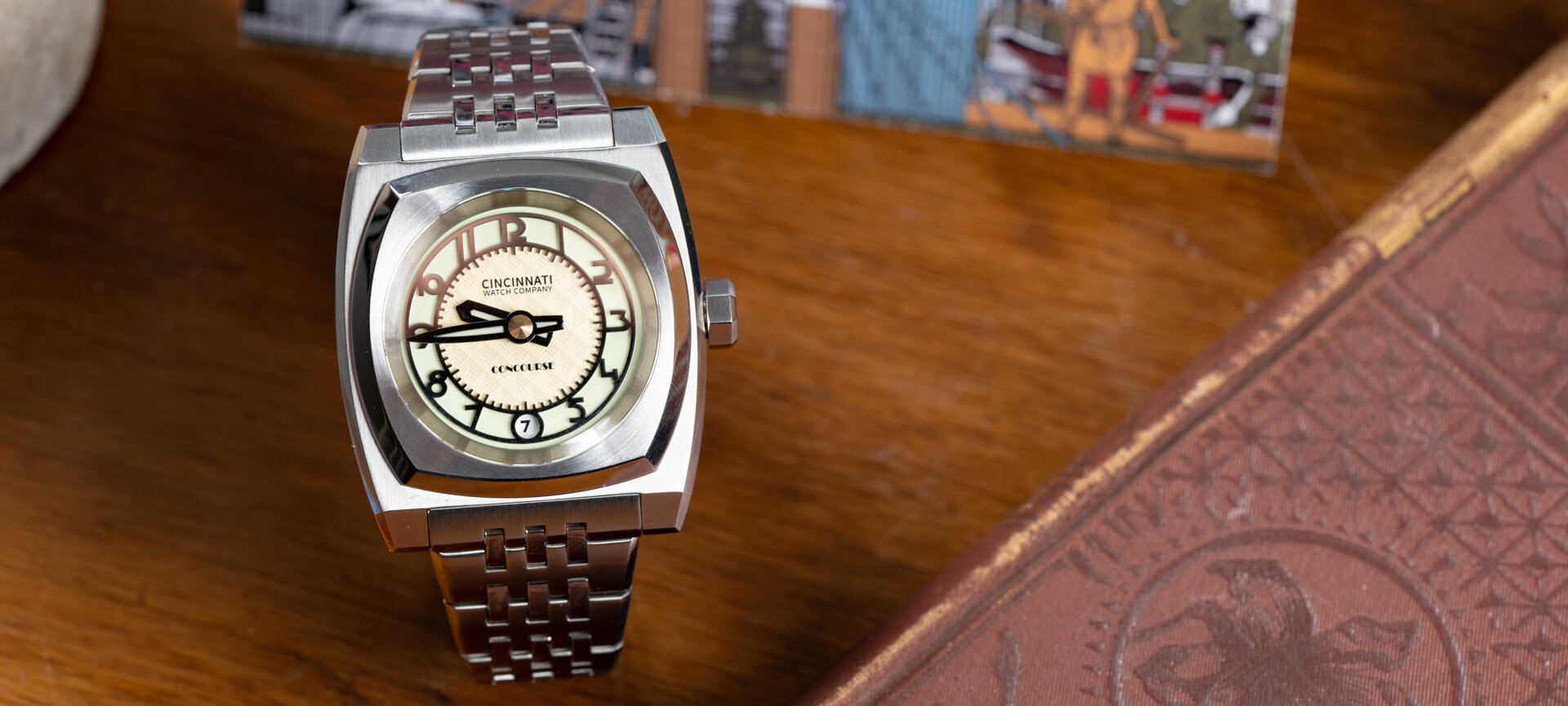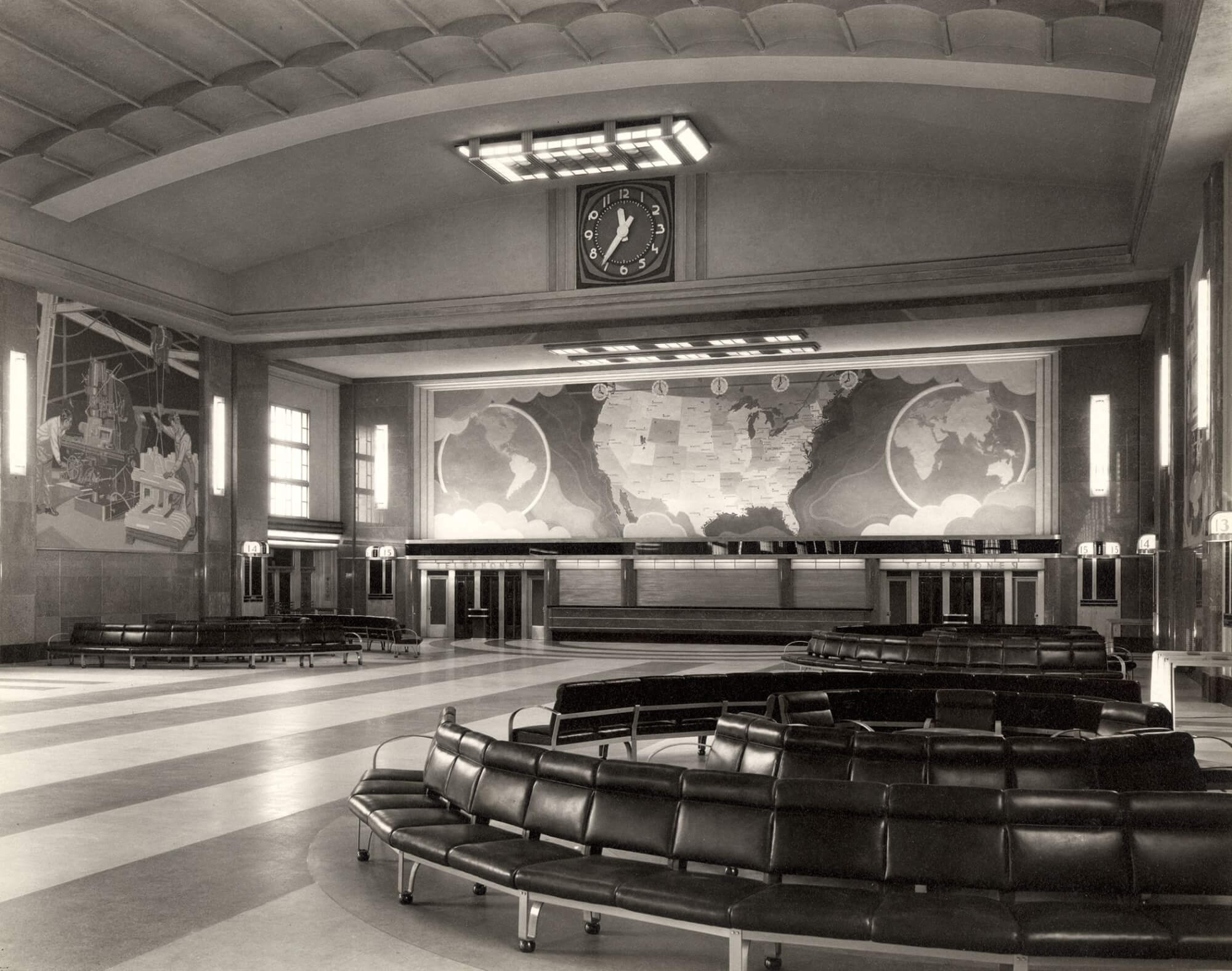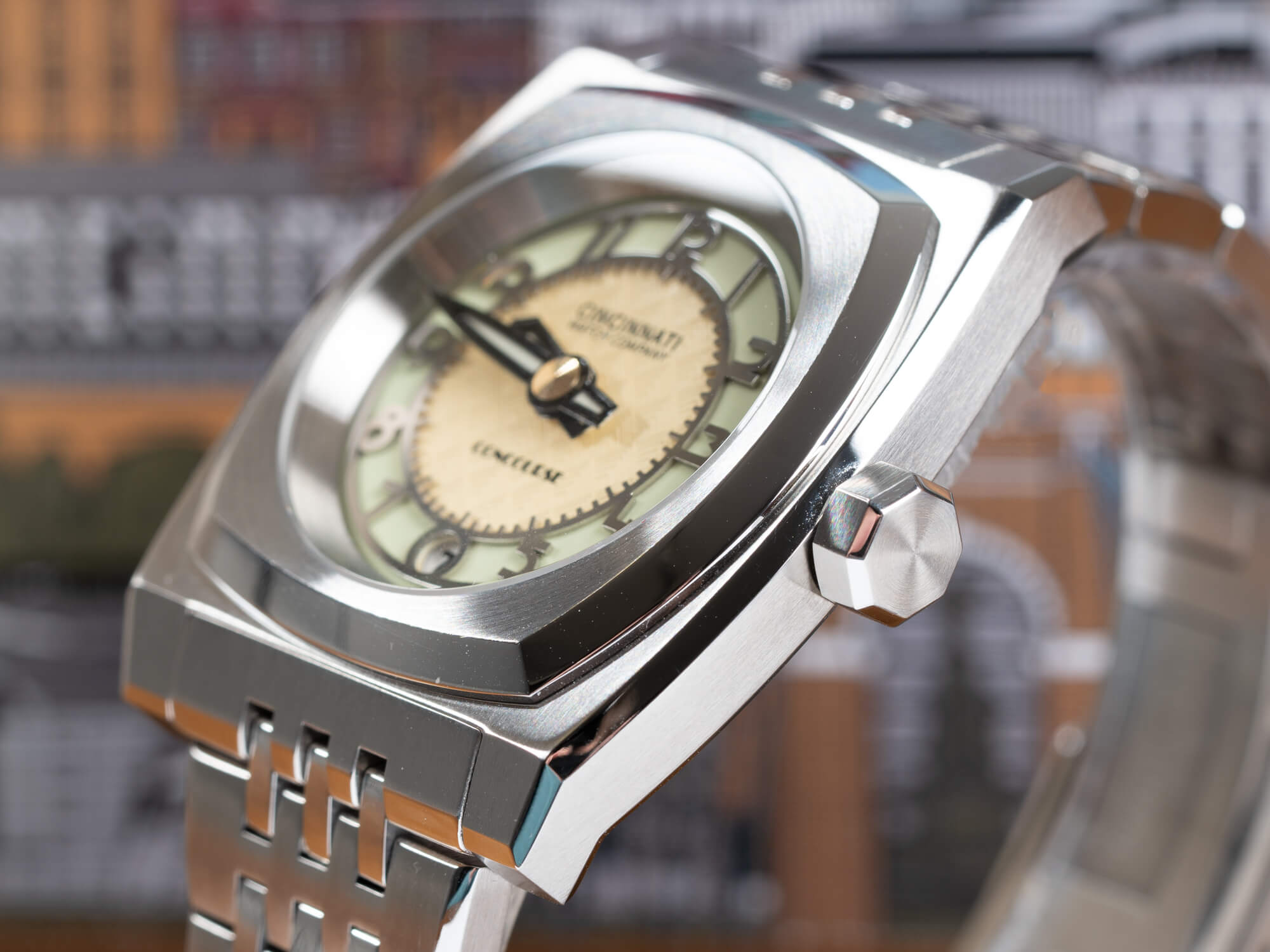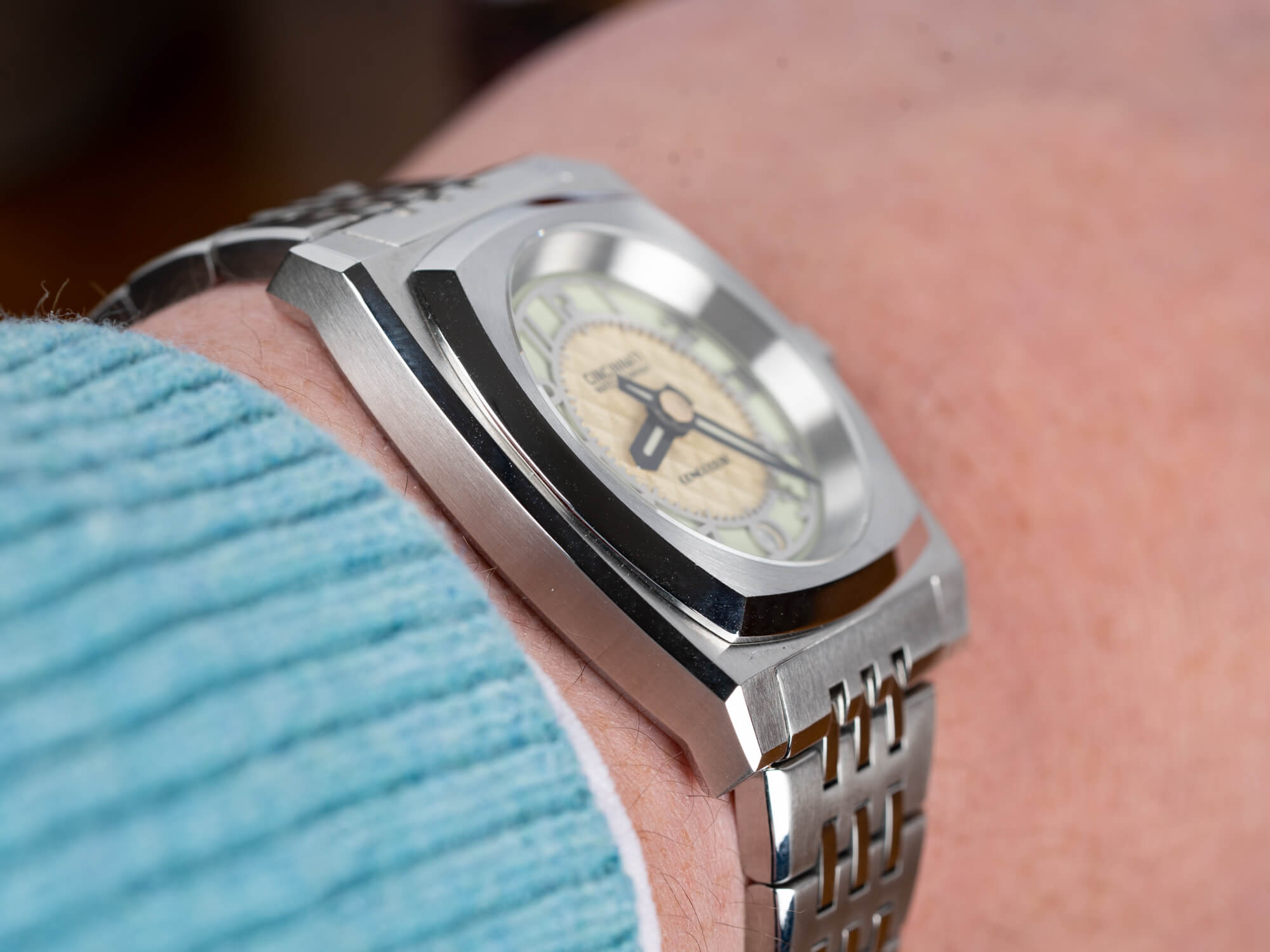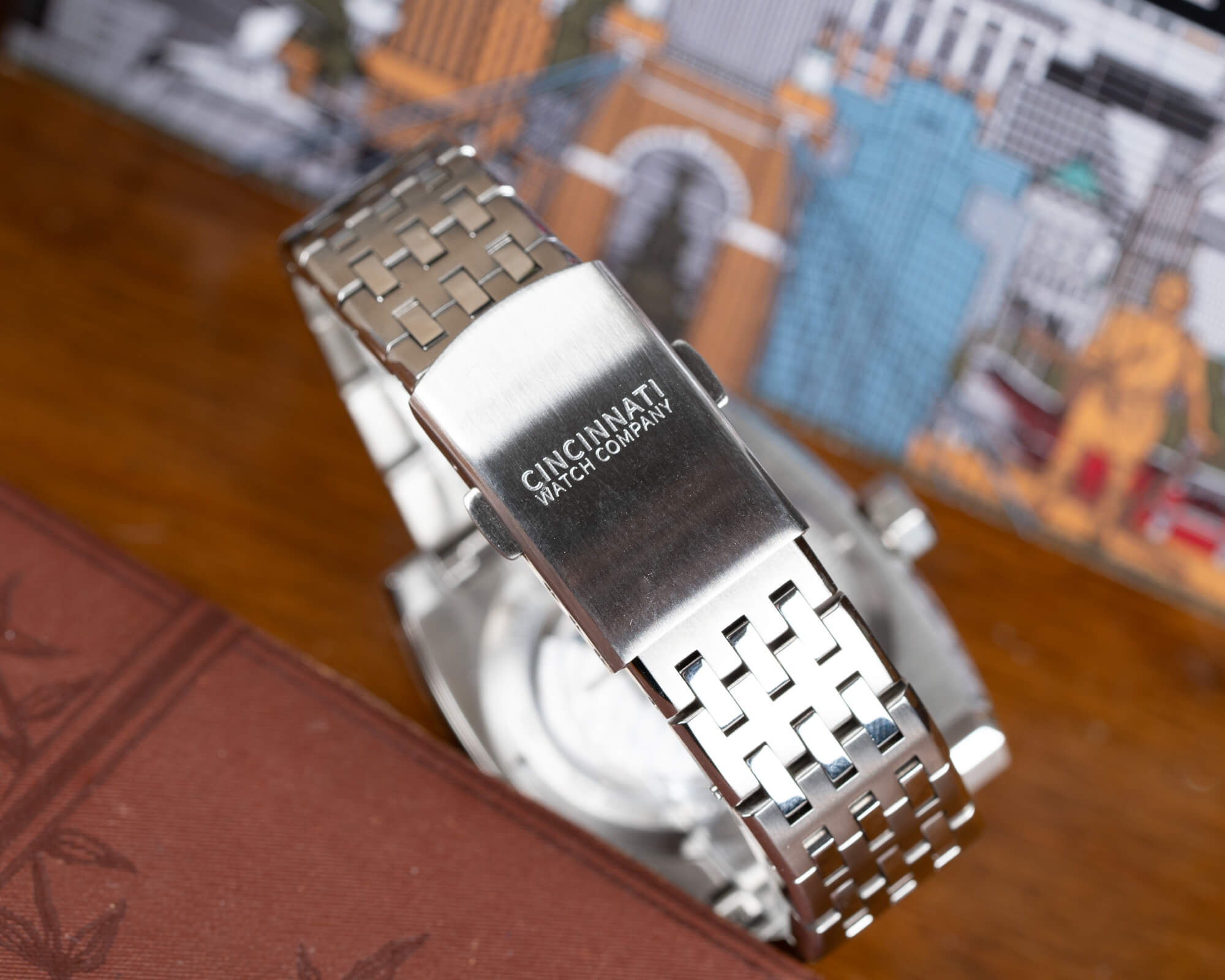Most watches that purport to be inspired by some item or time in history do so for the sake of creating a story, not to actually celebrate history. Even worse, though perhaps no less surprising, the word “inspiration” is stretched to the limits of credulity as brands create watches with little or no incorporation of the thing from which they claim to take inspiration. Cincinnati Watch Company has always been above board in this respect, and its new Concourse models are proof. Like the Union Terminal models that preceded them, the design for the dial of the Concourse is taken from a clock at Cincinnati’s Union Terminal. In this case, it’s the clock that until 1972 greeted travelers in the terminal’s main concourse. A faithful recreation of that Art Deco masterpiece, the Cincinnati Concourse continues the brand’s commitment to local history.
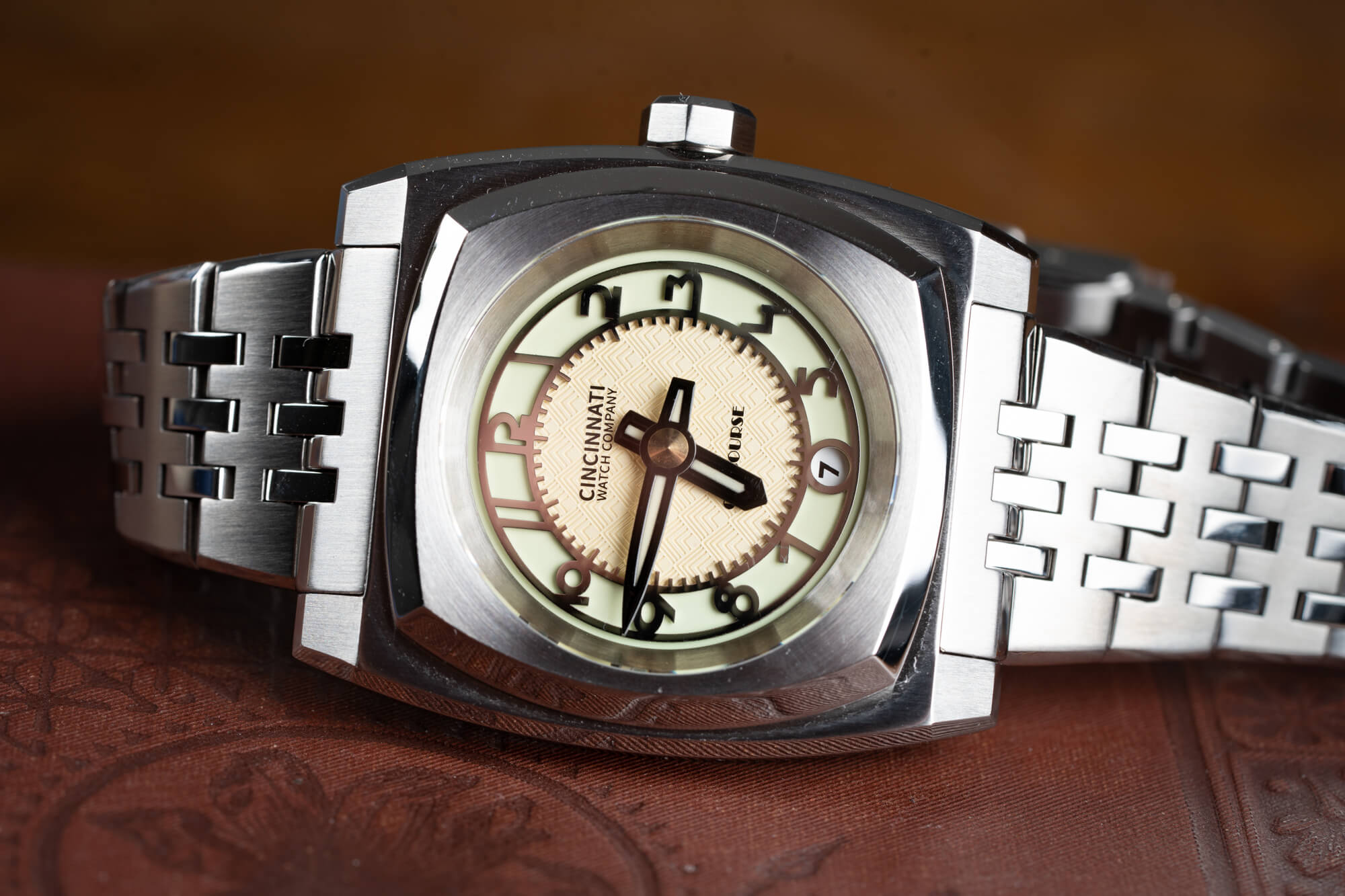
The Cincinnati Watch Co. Concourse is a three-watch collection that is offered in a case taken directly from the concourse clock, equipped with a heavily tapered bracelet. Three dials are available: a champagne dial with an Art Deco chevron motif, a burgundy dial with an Art Deco design, and a silver-white dial with horizontal brushing. All three help to reinforce the overall design of the source material, but for this particular occasion, I went hands-on with the Concourse Champagne.
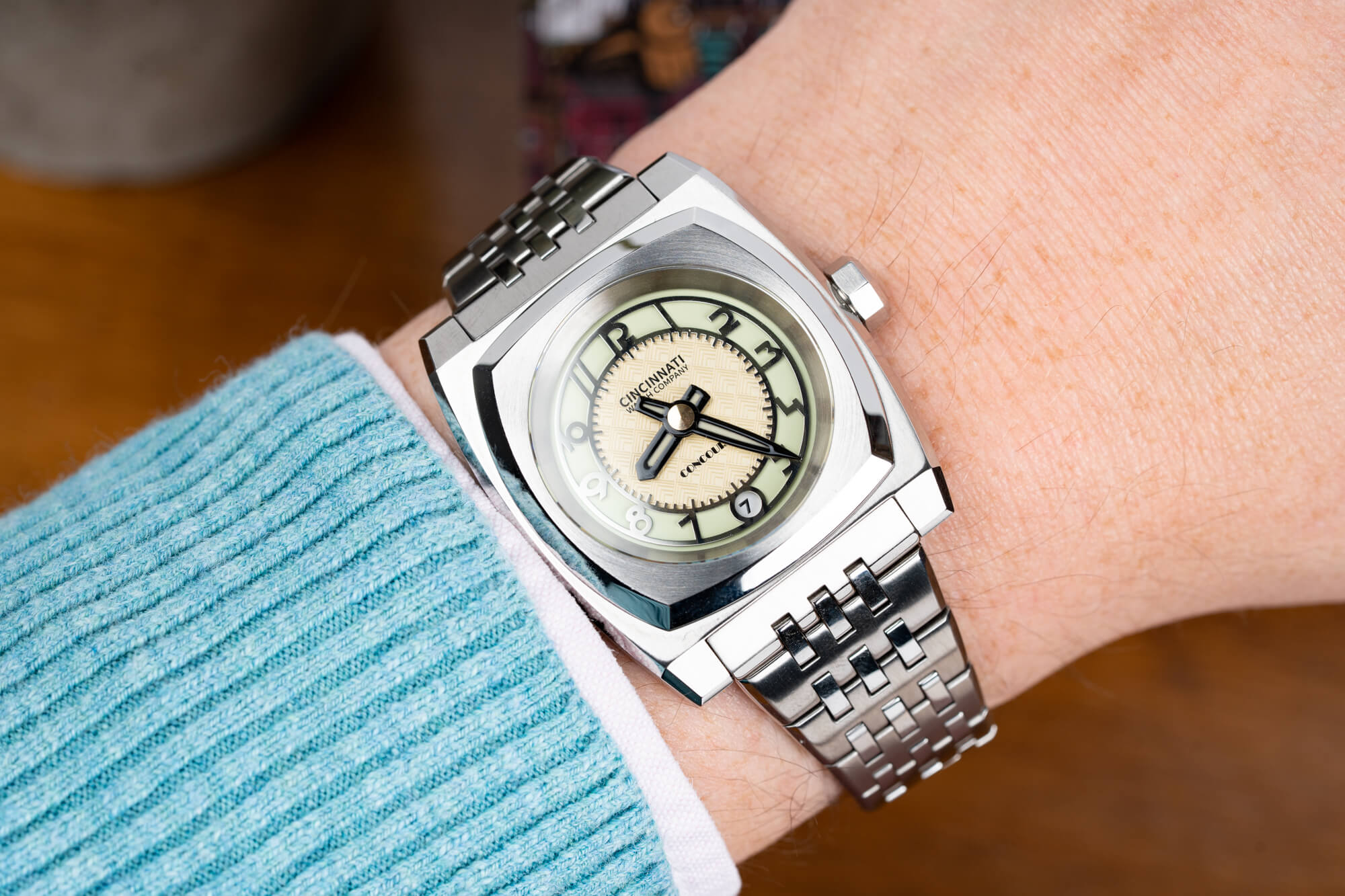
The Cincinnati Watch Co. Concourse is perhaps the most faithful recreation of a clock in a wristwatch I’ve ever seen (an admittedly niche market). The 38mm stainless steel case is likely to be divisive: blocky without mitigation, it is the result of taking the concourse clock and getting as close to it as possible. As you can see in the top photo, the clock featured a cushion bezel with a bowed square around it. This was translated to the wrist perfectly, with alternating brushed and polished surfaces distinguishing the different facets of the design. The flat sapphire crystal and a pull-out crown equaling the case in blockiness help to achieve 100m of water resistance. The winding action via the crown is some of the smoothest I’ve ever experienced, so much so that I was concerned it wasn’t working (putting my ear against the case during the act assured me it was).
The Concourse sat very well on my wrist, but that simply won’t be the case for everyone, though that is more likely due to its visual rather than its physical presence. We’re generally accustomed to watches that flow from case to band, but this watch, faithful as it is to the concourse clock, very intentionally does not. While the case has a modest 10.5mm thickness and 44.5mm lug-to-lug, it wears larger than you’d expect. The lugs are short and although they do come in a bit toward the bracelet, it’s only a suggestion of a meaningful taper. That dramatic jump from the outer edge of the case to the outer edge of the 22mm bracelet makes the case stand out prominently. The bracelet features the same combination of finishing as the case, with a generous polished bevel around the larger links and polishing for the entirety of the intermediate links. The links are secured with screws and they taper down to a 16mm folding clasp that is no-frills but was secure and comfortable on my wrist.
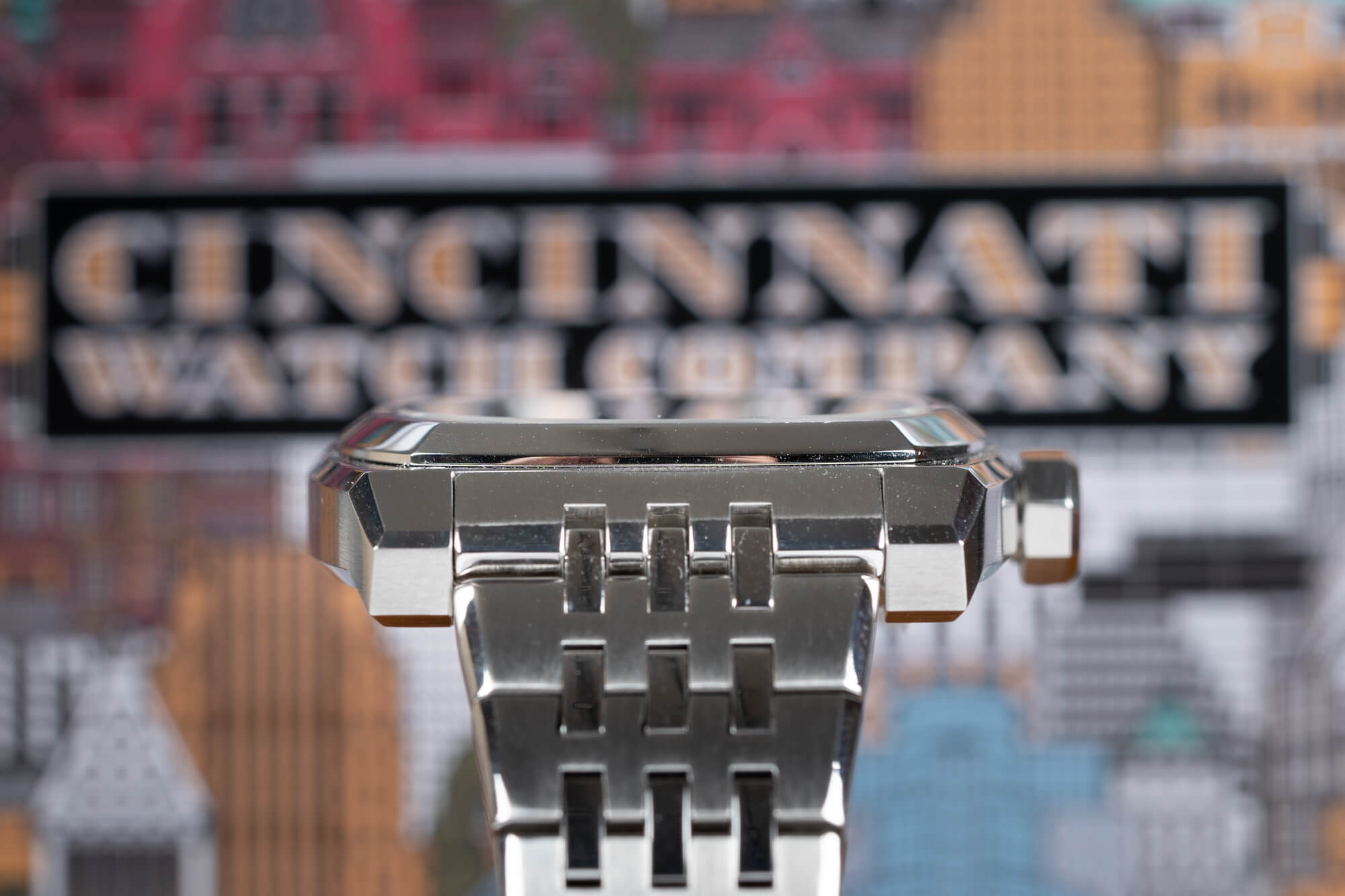
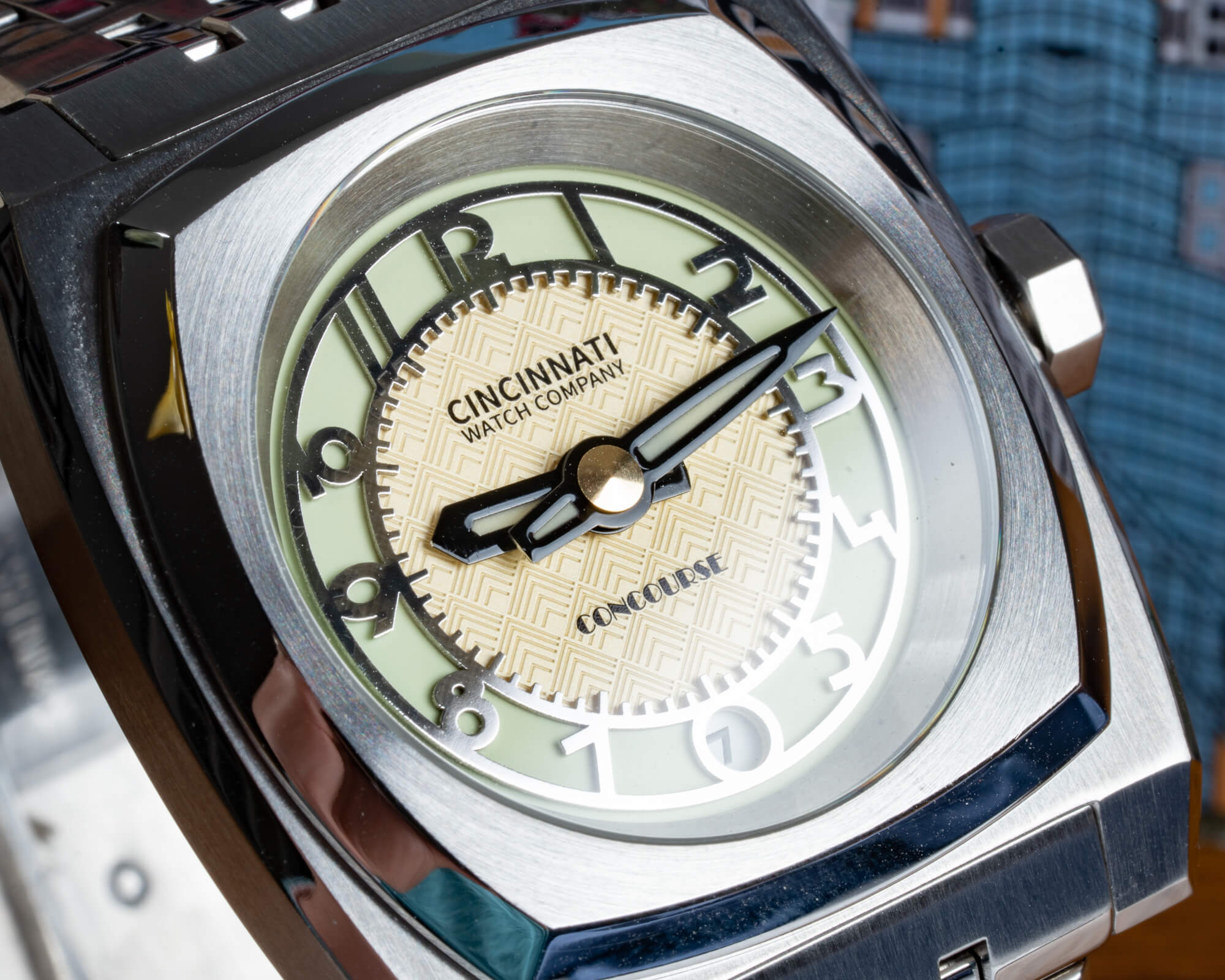
The Art Deco character of this watch is amplified tenfold in its dial. The polished hour ring is particularly notable for its stylized Art Deco numerals. Though the window is integrated almost perfectly, I do wonder if it’s necessary and whether a no-date dial would have been just a bit nicer. Hidden in broad daylight is Super-LumiNova C3 coating on the base of the hour ring; matched by the fill in the glossy hands, the lume shines brightly. The minute hashes that sprout from the interior polished ring recalled a city skyline to my eye, but are of course taken directly from the original clock (also, city skylines aren’t that uniform). The central dial is decorated with a repeating chevron motif that’s splendidly Art Deco; the model is also offered in a burgundy dial with a Frank Lloyd Wright-esque pattern or a more staid silver-white dial with horizontal brushing.
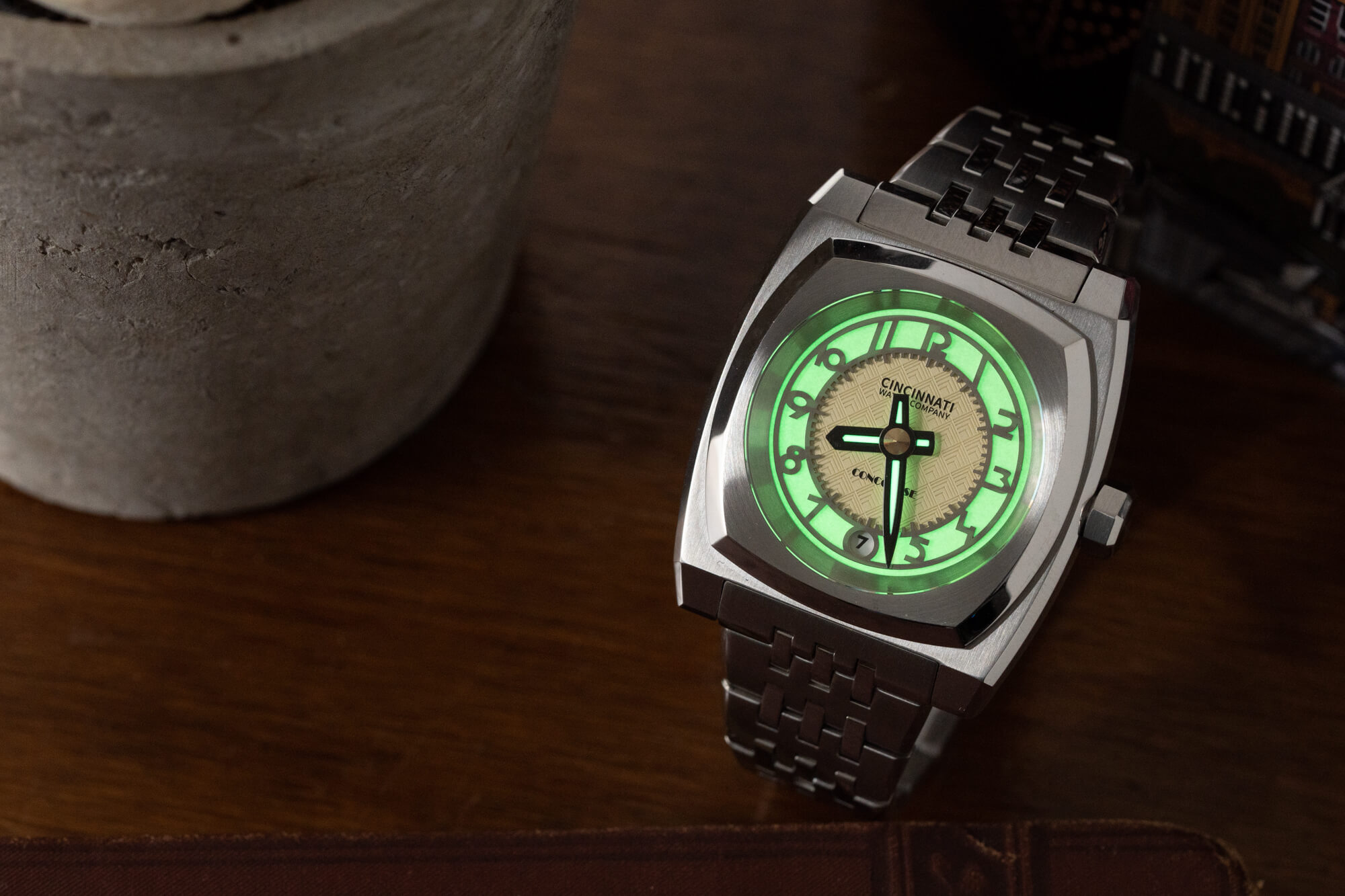
I want to take a minute to discuss the hands, as they stood out for me. They’re atypical on account of being directly copied from the concourse clock, and I think their form gives the entire watch even more character. The rounded glossy black outline around the plenty of bright lume fill gives them a dimensionality often lacking in hand design. On top of that, to further recreate the clock, the brand has placed a large brass cap, which adds a bit of warmth, a bit of vintage, and covers the unsightly pinion that carries the hands. All around, I think these hands are a triumph.
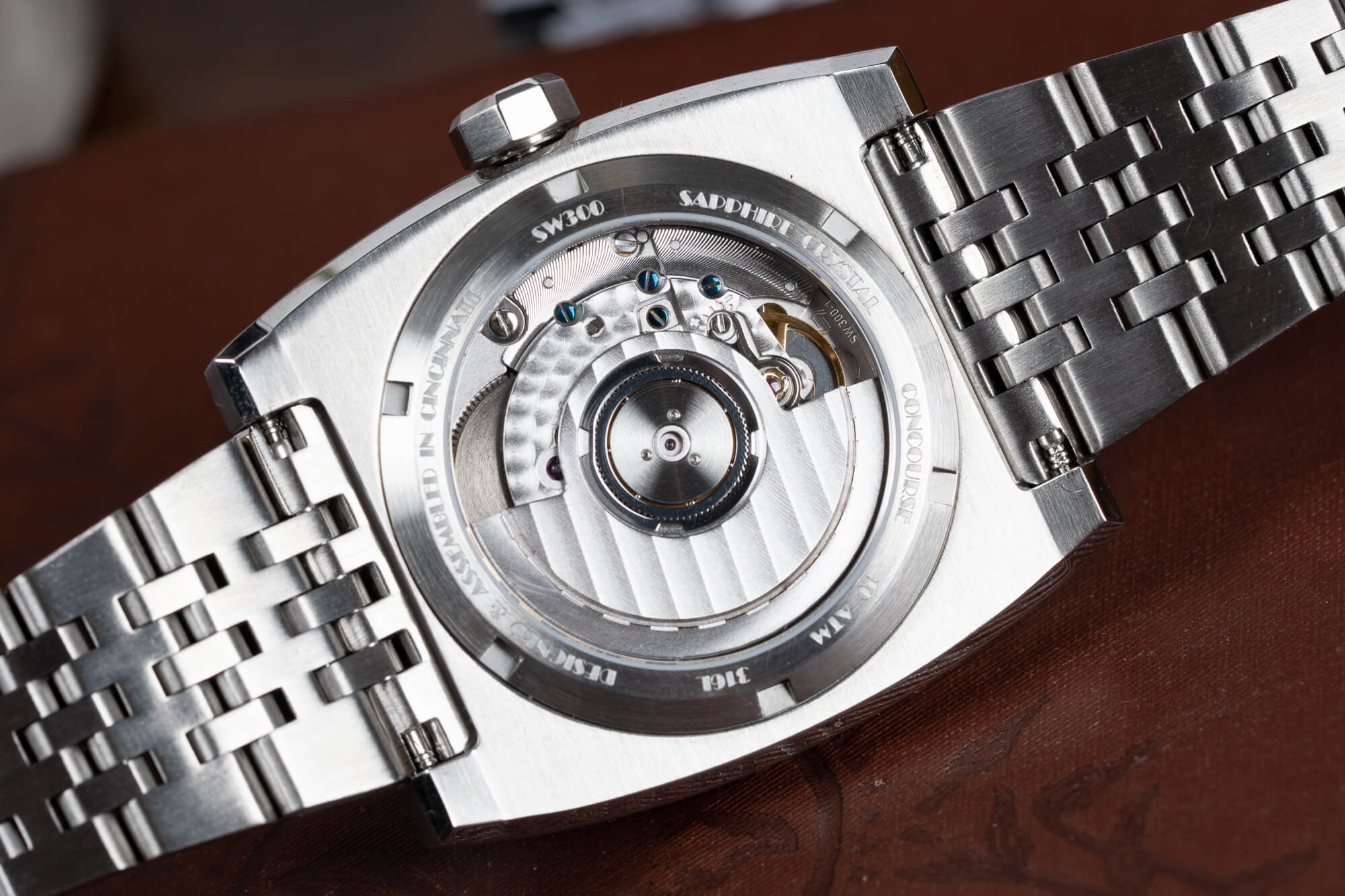
Cincinnati Watch Co. has dabbled in a wide array of movements, from automatic Seikos to manual wind Sellitas to quartz Rondas. The Concourse, though, uses the highest-end movement the brand has ever used: the elabore-grade Sellita SW300-1. This decorated Swiss automatic movement is adjusted in 5 positions and has a beat rate of 28,800 vph with a 56-hour power reserve. The watch has a display caseback, though given that there’s not even a custom rotor, perhaps the opportunity was missed to create a tasteful engraving of the Union Terminal concourse on a solid caseback.
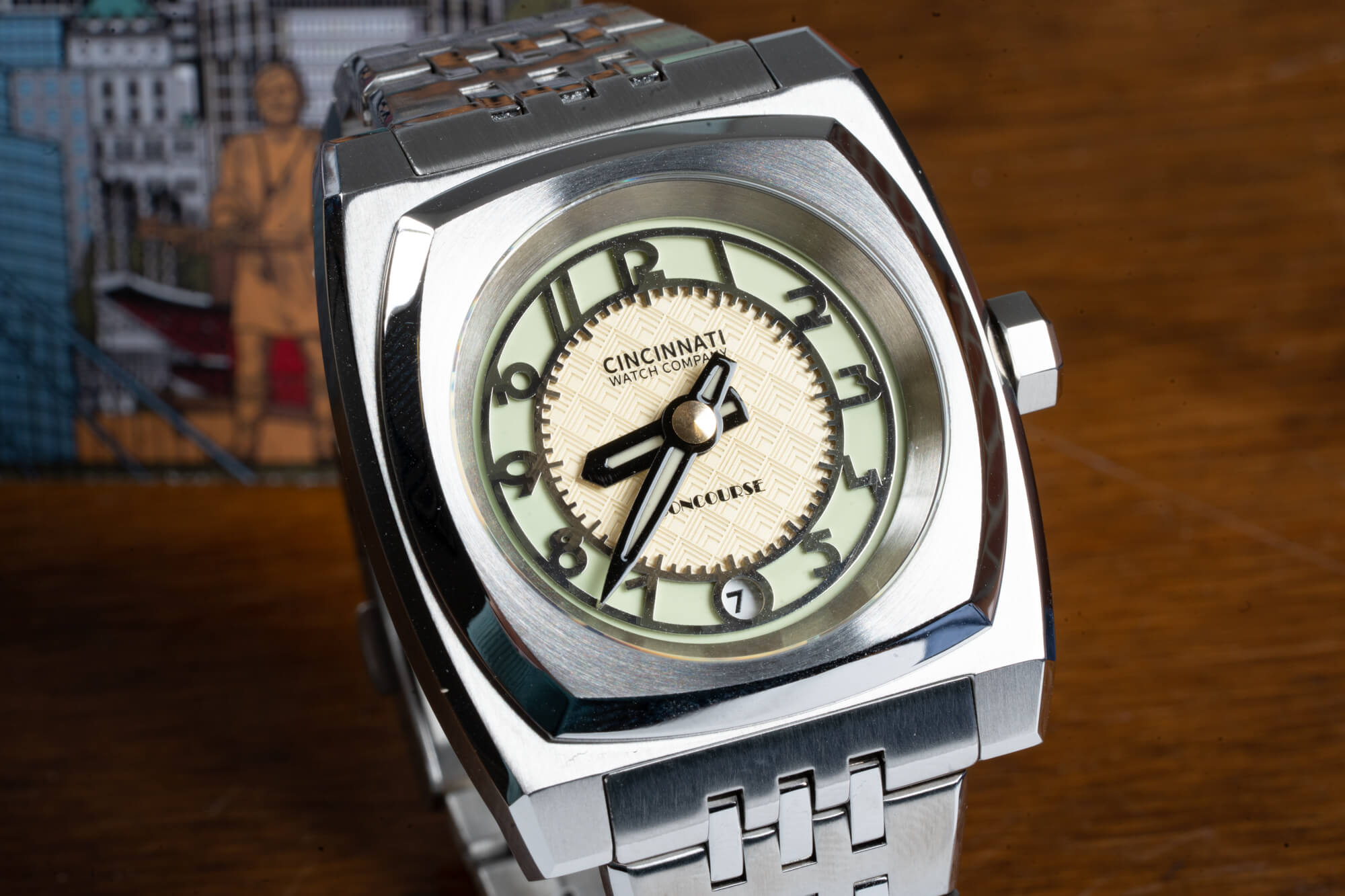
Once again, Cincinnati Watch Co. has delivered an authentically inspired watch, using the Union Terminal as inspiration for a second model. While this is the brand’s most particular design to date, it continues the design theme, remaining faithful to sources of inspiration in creating a vintage feel in a modern watch. As with other models, the brand has partnered to give a portion of proceeds to a Cincinnati institution, in this case, the Cincinnati Museum Center at Union Terminal. The Cincinnati Watch Co. Concourse has a retail price of $1,099 USD, but is available for $899 USD during the preorder period, which ends June 20. The watches are in production and deliveries are expected to start at the end of June. For more information, please visit the brand’s website.
Necessary Data
>Brand: Cincinnati Watch Co.
>Model: Concourse
>Price: $1,099 USD ($899 USD pre-order)
>Size: 38mm wide, 10.5mm thick, 44.5mm lug-to-lug, 22mm lug width
>When reviewer would personally wear it: To a Prohibition party
>Friend we’d recommend it to first: An Art Deco enthusiast from Cincinnati who loves trains
>Best characteristic of watch: Without a doubt, the dial and hands
>Worst characteristic of watch: The dramatic transition from case to bracelet

